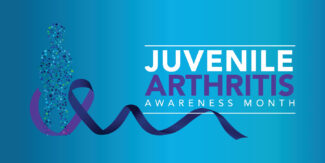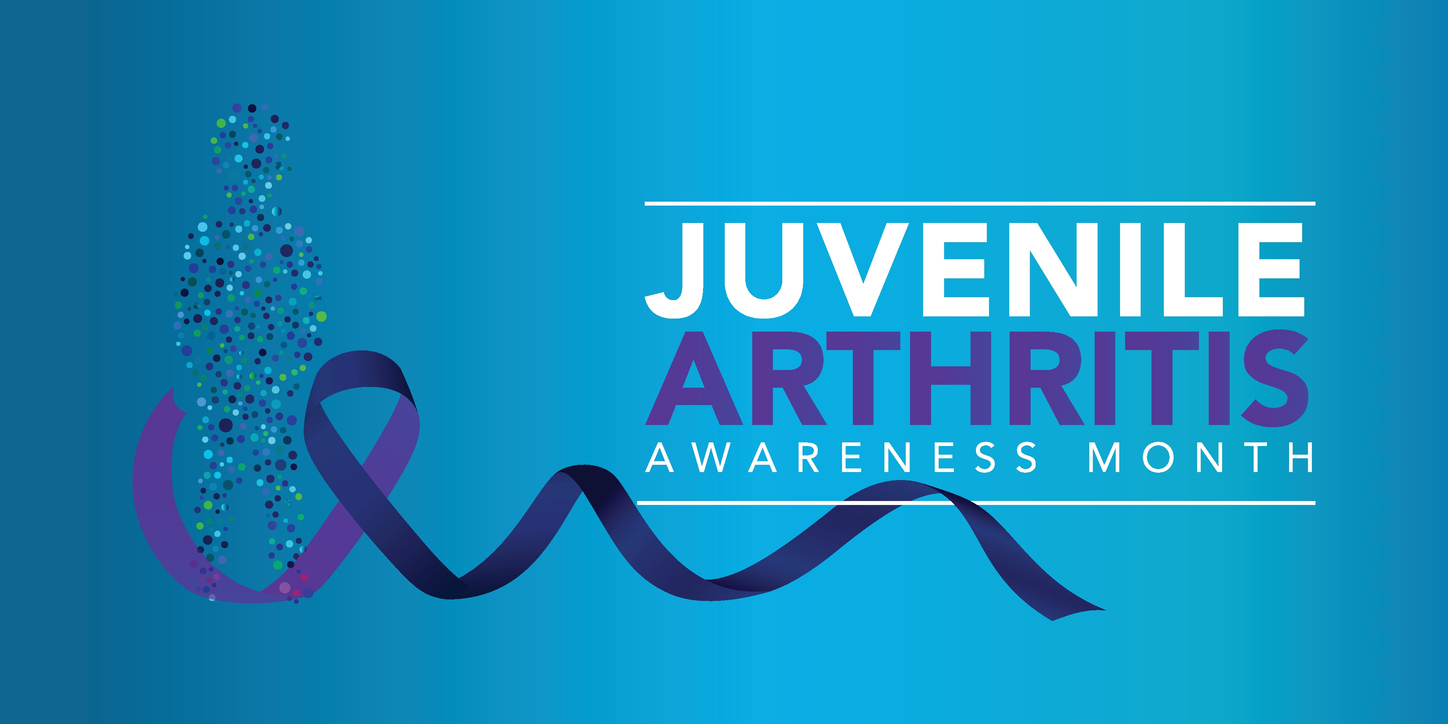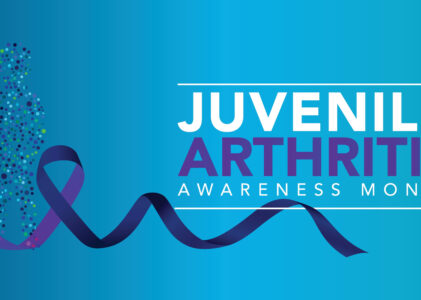Table of Contents
- 1 Understanding Juvenile Arthritis
- 2 Prevalence and Impact on Children
- 3 Importance of Early Diagnosis and Treatment
- 4 Types of Juvenile Arthritis
- 5 Symptoms of Juvenile Arthritis
- 6 Diagnosis of Juvenile Arthritis
- 7 Treatment and Management of Juvenile Arthritis
- 8 Support and Resources for Families
- 9 GWIC’s Commitment to State-of-the-Art Imaging Services
July is Juvenile Arthritis Awareness Month, a time dedicated to shining a light on the various forms of juvenile arthritis (JA) and the challenges faced by children and their families. Juvenile arthritis is an umbrella term for the many autoimmune and inflammatory conditions that can develop in children under the age of 16, causing joint pain, swelling, and stiffness. Raising awareness about juvenile arthritis is crucial for early diagnosis and effective treatment, which can significantly improve the quality of life for affected children.
Arthritis affects not only the elderly, but young people as well. It is important to understand juvenile arthritis, the types, symptoms, diagnosis, and support available for those affected.
Understanding Juvenile Arthritis
Juvenile arthritis is a group of autoimmune and inflammatory diseases that affect nearly 300,000 children in the United States alone. Unlike adult arthritis, which typically results from wear and tear, juvenile arthritis is usually the result of an autoimmune response where the body’s immune system mistakenly attacks its own tissues.
Juvenile arthritis encompasses various types of arthritis that occur in children under 16. The condition leads to inflammation of the joints, causing pain, swelling, stiffness, and in some cases, decreased mobility and physical function. Juvenile arthritis can also affect the eyes, skin, and gastrointestinal tract, making it a complex and multifaceted condition.
Prevalence and Impact on Children
Juvenile arthritis is a significant health issue, affecting one in every 1,000 children in the United States. The impact of this condition extends beyond physical symptoms, affecting a child’s emotional well-being, academic performance, and social interactions. The chronic pain and mobility issues associated with JA can lead to missed school days and limited participation in activities, which can be frustrating and isolating for children.
Importance of Early Diagnosis and Treatment
Early diagnosis and intervention are critical in managing juvenile arthritis effectively. Delaying treatment can result in more severe joint damage and other complications. Early treatment aims to reduce inflammation, relieve pain, prevent joint damage, and improve function. With appropriate medical care, many children with juvenile arthritis can lead active and fulfilling lives.
Types of Juvenile Arthritis
Juvenile arthritis encompasses a variety of conditions, each with its own set of symptoms and treatment requirements. Understanding these types can help identify the specific form of arthritis a child may have, leading to more targeted and effective treatments.
Juvenile Idiopathic Arthritis (JIA)
Juvenile Idiopathic Arthritis (JIA) is the most common type of arthritis in children. The term “idiopathic” means that the cause is unknown. JIA is characterized by persistent joint inflammation, and it is divided into several subtypes based on the number of joints affected and other symptoms.
- Oligoarthritis: This subtype affects four or fewer joints, typically the larger ones such as the knees and ankles. It is the most common form of JIA and often has a good prognosis if treated early.
- Polyarthritis: This subtype affects five or more joints, including both large and small joints. It can be more severe than oligoarthritis and may require more aggressive treatment.
- Systemic JIA: This form of JIA not only affects the joints but also involves other body systems, causing symptoms such as fever, rash, and inflammation of internal organs. It is the least common but can be very serious.
Juvenile Dermatomyositis
Juvenile Dermatomyositis is an inflammatory disease that causes muscle weakness and a distinctive skin rash. It primarily affects the muscles and skin but can also impact other parts of the body.
- Symptoms: Common symptoms include muscle weakness, fatigue, difficulty swallowing, and a reddish-purple rash on the eyelids and knuckles. Inflammation in the muscles can lead to severe weakness and disability if not treated promptly.
Juvenile Lupus
Juvenile Lupus, also known as Systemic Lupus Erythematosus (SLE), is a chronic autoimmune disease that can affect various parts of the body, including the joints, skin, kidneys, blood, and brain.
- Symptoms: Symptoms vary widely but often include joint pain and swelling, skin rashes (particularly a butterfly-shaped rash across the cheeks and nose), fatigue, fever, and kidney problems. Juvenile lupus can be life-threatening if it affects major organs.
Juvenile Scleroderma
Juvenile Scleroderma is a group of rare diseases that cause hardening and tightening of the skin and connective tissues. The
re are two main types: localized scleroderma and systemic scleroderma.
- Localized Scleroderma: Affects only the skin and sometimes the muscles underneath. It is more common in children and usually less severe.
- Systemic Scleroderma: Can affect internal organs in addition to the skin. This form is more serious and requires careful management.
Kawasaki Disease
Kawasaki Disease is an acute febrile illness that primarily affects children under the age of five. It causes inflammation in the walls of some blood vessels in the body, including the coronary arteries.
- Symptoms: Symptoms include a high fever, rash, swelling of the hands and feet, red eyes, swollen lymph nodes, and irritation and inflammation of the mouth, lips, and throat. It is a leading cause of acquired heart disease in children and requires immediate medical attention.
Mixed Connective Tissue Disease
Mixed Connective Tissue Disease (MCTD) is a rare autoimmune disorder that has features of several connective tissue diseases, including lupus, scleroderma, and polymyositis.
- Symptoms: Symptoms include severe fatigue, muscle weakness, joint pain and swelling, Raynaud’s phenomenon (fingers and toes turning white or blue in response to cold or stress), and esophageal dysfunction. The symptoms can overlap with those of other autoimmune diseases, making diagnosis challenging.
Understanding the different types of juvenile arthritis is crucial for accurate diagnosis and effective treatment. Each type requires a tailored approach to management, emphasizing the importance of specialized care and support for affected children and their families. At Greater Waterbury Imaging Center, we are committed to providing the highest quality imaging services to aid in the diagnosis and management of juvenile arthritis.
Symptoms of Juvenile Arthritis
Juvenile arthritis (JA) manifests in various forms, but several common symptoms are shared across the different types. Understanding these symptoms can aid in early recognition and prompt medical intervention.
Common Symptoms Across Different Types of JA
- Joint Pain: One of the most prevalent symptoms, joint pain, can be constant or intermittent. It often worsens after periods of rest or inactivity, such as in the morning or after a nap.
- Swelling: Affected joints may appear swollen and may feel warm to the touch. Swelling can fluctuate, sometimes increasing after physical activity.
- Stiffness: Stiffness in the joints, particularly in the morning or after periods of inactivity, is a common symptom. This stiffness can limit the range of motion and hinder daily activities.
- Fever: Many children with JA experience recurrent fevers, often alongside flare-ups of other symptoms. These fevers can be low-grade and may not have an obvious cause.
How Symptoms Can Vary from Child to Child
The symptoms of juvenile arthritis can vary widely among children. Some may experience mild symptoms that come and go, while others may have severe symptoms that persist. The type of JA, the number of joints involved, and the presence of systemic symptoms (affecting the whole body) can all influence the symptom profile. Additionally, symptoms can fluctuate over time, with periods of exacerbation (flare-ups) and remission.
Diagnosis of Juvenile Arthritis
Early diagnosis of juvenile arthritis is critical for effective management and prevention of long-term damage. Identifying the condition early allows for prompt treatment, which can help control symptoms and improve quality of life.
Importance of Early Diagnosis
Delayed diagnosis can lead to progressive joint damage, reduced function, and growth problems in children. Early intervention is essential to control inflammation, relieve pain, and prevent complications. It can also improve the overall prognosis and reduce the impact of the disease on the child’s daily life.
Diagnostic Procedures and Tests
- Blood Tests: Blood tests can help identify markers of inflammation (e.g., elevated erythrocyte sedimentation rate [ESR] or C-reactive protein [CRP]) and autoimmune activity (e.g., presence of antinuclear antibodies [ANA] or rheumatoid factor [RF]).
- Imaging Tests: Imaging plays a crucial role in diagnosing JA. X-rays, MRI scans, and ultrasound can reveal joint damage, inflammation, and other abnormalities. These tests help in assessing the extent of the disease and monitoring its progression.
- Physical Exams: A thorough physical examination by a pediatric rheumatologist is vital. The doctor will check for joint tenderness, swelling, and range of motion. They may also look for other signs of systemic involvement, such as rashes or eye inflammation.
Role of Imaging in Diagnosing JA
Imaging is a cornerstone in the diagnosis and management of juvenile arthritis. At Greater Waterbury Imaging Center (GWIC), we offer advanced imaging technologies that are essential for:
- Early Detection: MRI and ultrasound can detect early signs of inflammation and joint damage that may not be visible on X-rays. This allows for earlier intervention and better management of the disease.
- Monitoring Disease Progression: Regular imaging helps track the progression of JA and the effectiveness of treatments. It provides detailed information about changes in the joints over time.
- Guiding Treatment Decisions: Imaging results can inform treatment plans by revealing the severity and extent of joint involvement. This helps healthcare providers tailor interventions to the individual needs of each child.
At GWIC, we are dedicated to providing high-quality MR imaging services that support the early diagnosis and effective management of juvenile arthritis. Our state-of-the-art facilities and experienced staff are committed to helping children with JA achieve the best possible outcomes.
Treatment and Management of Juvenile Arthritis
Managing juvenile arthritis (JA) involves a multifaceted approach to control symptoms, reduce inflammation, and maintain joint function. Here are the primary treatment options:
Medications
- Nonsteroidal Anti-Inflammatory Drugs (NSAIDs): NSAIDs are commonly used to reduce pain and inflammation in children with JA. These medications can help manage daily symptoms but do not alter the course of the disease.
- Disease-Modifying Antirheumatic Drugs (DMARDs): DMARDs are used to slow the progression of juvenile arthritis and prevent joint damage. Methotrexate is a commonly prescribed DMARD for JA.
- Biologics: Biologic agents are newer drugs that target specific components of the immune system. These medications can be highly effective in reducing inflammation and preventing joint damage in children who do not respond to traditional DMARDs.
Physical Therapy and Exercise

- Importance of Maintaining Joint Function and Flexibility: Physical therapy is crucial in managing JA. It helps maintain joint function, improve muscle strength, and enhance overall mobility. Regular exercise tailored to the child’s abilities can prevent joint stiffness and promote better health.
Diet and Nutrition
- Role of a Balanced Diet in Managing Symptoms: A healthy diet can play a supportive role in managing juvenile arthritis. Nutrient-rich foods that reduce inflammation and support overall health, such as fruits, vegetables, lean proteins, and whole grains, are beneficial. Maintaining a healthy weight also reduces stress on the joints.
Surgery
- When Surgical Intervention May Be Necessary: In severe cases where joint damage is extensive and other treatments have failed, surgery may be necessary. Procedures can include joint replacement or reconstruction to restore function and relieve pain.
Support and Resources for Families
Juvenile arthritis affects not only the child but also the entire family. Emotional and psychological support is essential for coping with the challenges of JA.
- Emotional and Psychological Support for Children and Families: Living with JA can be emotionally taxing. Counseling and psychological support help children and families manage stress, anxiety, and depression related to the condition.
- Importance of Support Groups and Counseling: Joining support groups allows families to connect with others facing similar challenges, share experiences, and receive mutual support. Counseling services provide professional guidance and emotional support.
- Resources Provided by Organizations Like the Arthritis Foundation: The Arthritis Foundation offers a wealth of resources, including educational materials, support networks, and advocacy programs to help families navigate life with juvenile arthritis.
- Educational Materials and Community Programs: Access to educational materials and participation in community programs can empower families with knowledge about managing JA and staying informed about the latest research and treatment options.
GWIC’s Commitment to State-of-the-Art Imaging Services
At Greater Waterbury Imaging Center (GWIC), we are dedicated to providing comprehensive support and state-of-the-art imaging services to children with juvenile arthritis.
- Overview of Services Provided by Greater Waterbury Imaging Center: GWIC offers advanced imaging technologies, including MRI, CT scans, and ultrasound, essential for diagnosing and monitoring juvenile arthritis.
- Importance of Advanced Imaging Technologies in Managing JA: Early and accurate imaging is crucial for assessing joint damage and guiding effective treatment plans. Our imaging services help ensure timely and precise diagnosis and ongoing monitoring of the condition.
- Commitment to Providing Comprehensive Care and Support: GWIC is committed to delivering high-quality care and supporting families through the challenges of juvenile arthritis. Our team works closely with healthcare providers to ensure each child receives the best possible care tailored to their needs.
Juvenile arthritis presents significant challenges, but with early diagnosis, comprehensive treatment, and robust support systems, children with JA can lead active and fulfilling lives. July’s Juvenile Arthritis Awareness Month is an important opportunity to raise awareness, support affected families, and advocate for better care and resources.
At GWIC, we are dedicated to providing advanced and compassionate imaging services that help manage juvenile arthritis effectively. Your child’s health and well-being are our top priorities. Contact us today to learn more about our services and how we can assist you in navigating the complexities of juvenile arthritis.


